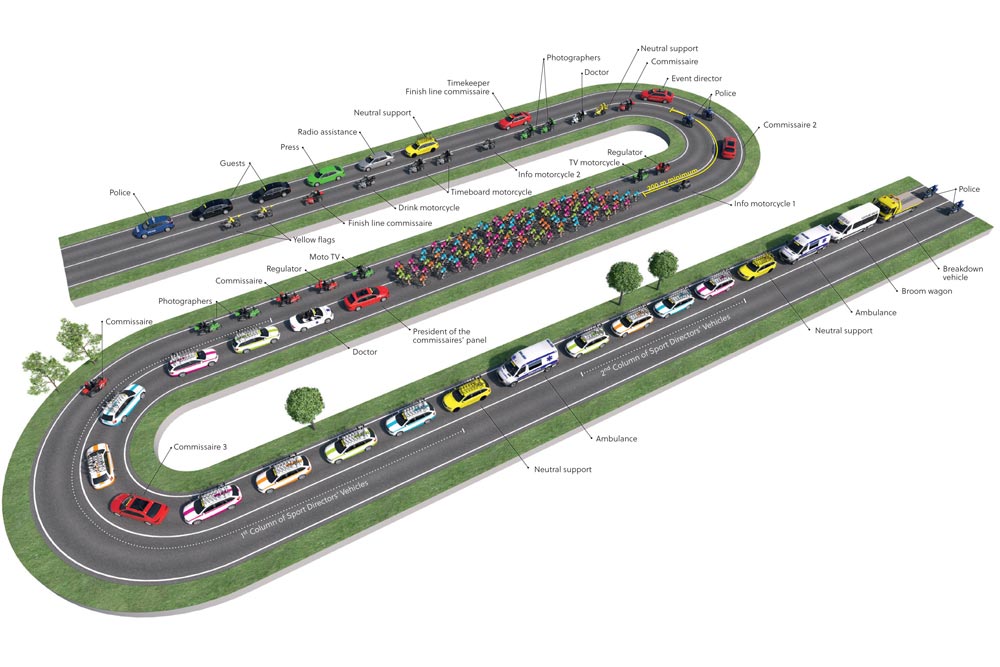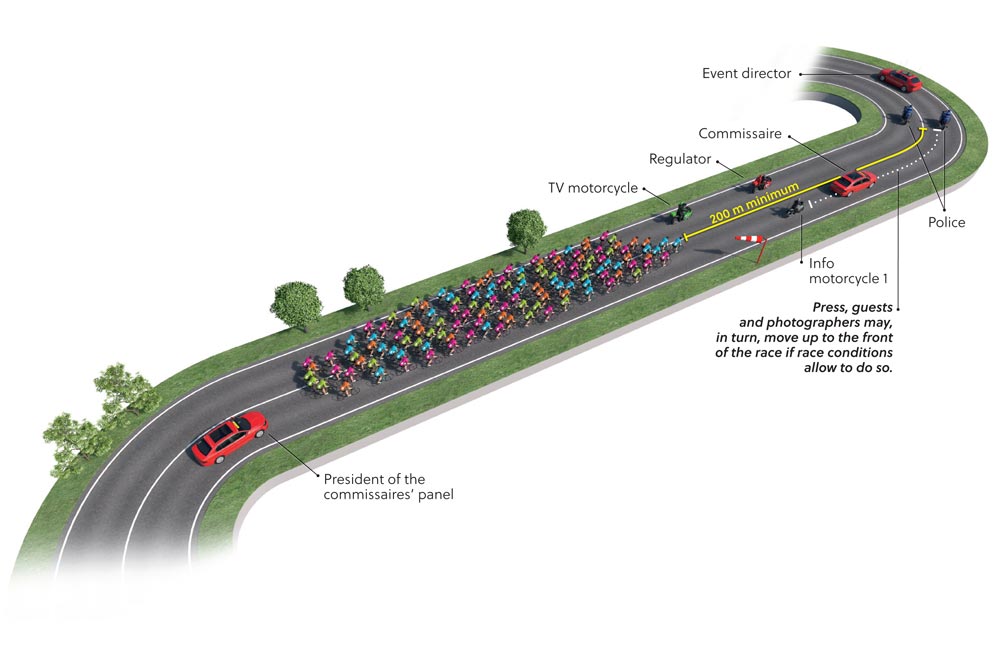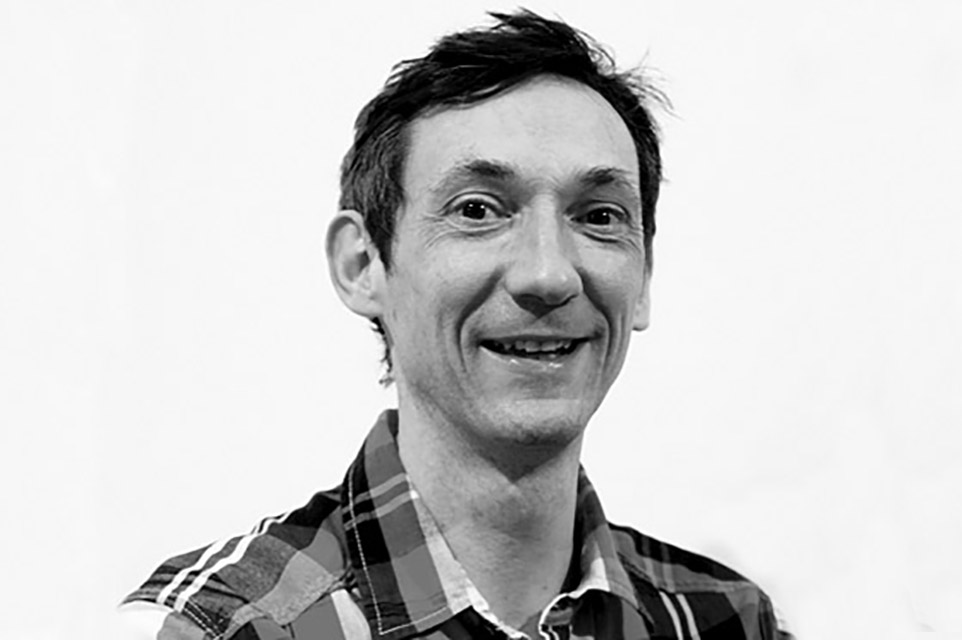New rules for race cars and motorbikes introduced by UCI to improve rider safety
Stringent regulations are introduced by UCI to clearly set out the expected behaviour of drivers during professional bike races

Cycle sport's governing body, the Union Cycliste Internationale (UCI) has published a new and detailed set of guidelines for the behaviour of drivers in charge of official cars, motorbikes and other vehicles that share the road with riders during races.
The Guidelines for Vehicle Circulation in the Race Convoy have been published after several incidents in recent years where race vehicles have collided with riders, causing serious injury.
Belgian rider Antoine Demoitié (Wanty-Groupe Gobert) was killed after a collision with a race motorbike during Ghent-Wevelgem last year, which sent shockwaves throughout the sport. Stig Broeckx (Lotto-Soudal) and Danilo Wyss (BMC) were also injured in 2016 after separate incidents involving race motos.
Subsequently, the UCI introduced guidelines to improve rider safety while the full rules were being drawn up, and increased the number of personnel involved in checking that the rules were adhered to.
>>> Belgian rider Antoine Demoitié dies in hospital after Ghent-Wevelgem crash
The new, full guidelines were prepared in conjunction with organisations representing teams, cyclists and race organisers, and seek to make it very clear how drivers of vehicles within a race should behave.

"The cars and motorcycles in the race convoy are necessary for the organisation of cycling events, and the work and commitment of those in charge of these vehicles, very often volunteers, should be acknowledged," said UCI president Brian Cookson.
The latest race content, interviews, features, reviews and expert buying guides, direct to your inbox!
"However, the organisation of the race convoy, based on the road code, should be supervised.
"Part of a global plan to improve the security of riders in races, this guide aims to establish working standards and specific rules, and in turn enable organisers, teams or National Federations to ensure that their own members have the training necessary to drive in the race convoy."

All those driving vehicles in the race must adhere to the guidelines or risk being ejected from the event. In several instances, the rules are far more strict than most host country's highway rules.
All drivers must have "zero per cent" alcohol in their bloodstream and may be subjected to narcotics test, which must also be completely clear. Drivers must not use a mobile phone, including via a headset or hands-free system. No TV is allowed to be installed on the dashboard of any vehicle.
Drivers should, of course, have a valid driving licence and also be licenced as an in-race driver by the relevant national cycling federation.
>>> UCI cycle race rule changes for 2017 you may not know about
Only four people are allowed in any race vehicle, including the driver. The race radio, receiving the official event broadcast of updates and warnings, must be tuned in and live at all times.
Traditionally, some sports directors drive a following car, and have both a dash-mounted TV relaying race pictures and be communicating with others via mobile devices. They will now have to employ a dedicated driver.
Much of the new rules are concerned with the way in which vehicles are allowed to move around in among the riders.
Several diagrams make it very clear how and where vehicles should be positioned at various times during an event: e.g. at the race start, when the peloton is all together, when there's an escape group, and in time trials. The latter includes instructions on how to prevent drafting, and what should happen in the event of a rider and following car overtaking another rider.
There is also a clear hierarchy of vehicles. For example, motorbikes providing live television pictures take precedent over photographer's bikes, radio bikes and those filming non-live videos.

A section of the guidelines cover what should happen in the event of a crash, with priority given to emergency vehicles. "If media motorcycles wish to cover the incident, they must stop at the side of the road, off the road as much as possible, ensuring that it is possible for other vehicles to pass."
The UCI is also very clear that no race vehicles should be near riders at the finish, both in terms of safety and "to avoid appearing in the view of the fixed cameras and marring the shots of the photographers ".
Those not adhering to the rules are liable to "face significant financial penalties as well as suspensions of their UCI Licence that allows them to drive in the race convoy".

Nigel Wynn worked as associate editor on CyclingWeekly.com, he worked almost single-handedly on the Cycling Weekly website in its early days. His passion for cycling, his writing and his creativity, as well as his hard work and dedication, were the original driving force behind the website’s success. Without him, CyclingWeekly.com would certainly not exist on the size and scale that it enjoys today. Nigel sadly passed away, following a brave battle with a cancer-related illness, in 2018. He was a highly valued colleague, and more importantly, an exceptional person to work with - his presence is sorely missed.